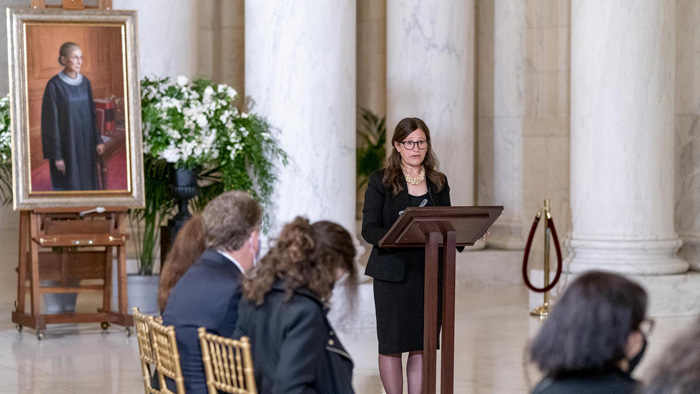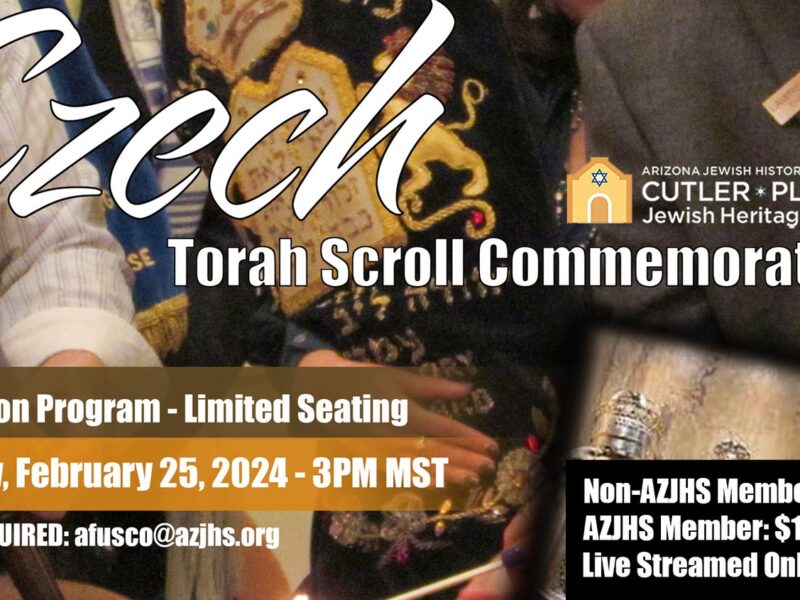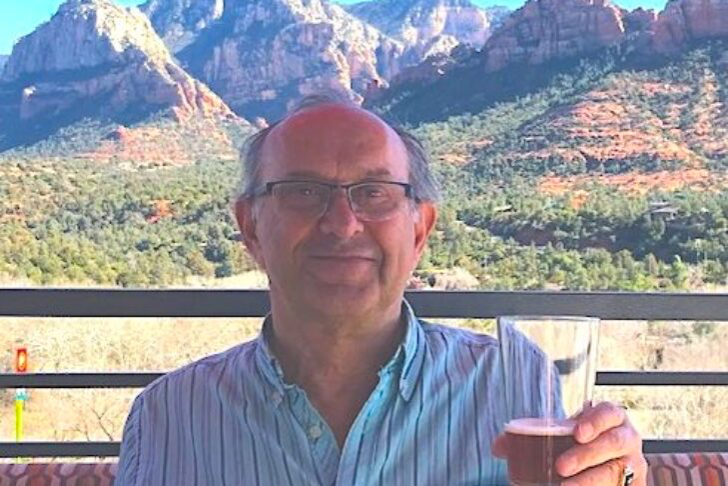Ginsburg brought her Judaism into her chambers, where she hung the biblical words “Tzedek, tzedek tirdof,” which mean “Justice, justice shall you pursue.” On Wednesday, she was remembered in a ceremony for her family and her fellow Supreme Court justices as both an American luminary and a Jewish one.
“To be born into a world that does not see you, that does not believe in your potential … and despite this to be able to see beyond the world you are in, to imagine that something can be different: that is the job of a prophet. And it is the rare prophet who not only imagines a new world but also makes that world a reality in her lifetime,” Holtzblatt said, speaking of Ginsburg’s lifelong work to enshrine gender equality in the nation’s laws.
Holtzblatt, the rabbi who led the ceremony along with Chief Justice John G. Roberts Jr., has personal ties to Ginsburg beyond leading Northwest Washington’s Adas Israel synagogue, where Ginsburg worshiped: Holtzblatt’s husband, a lawyer, clerked for Ginsburg.
Last Friday, Holtzblatt learned of Ginsburg’s death just as the Jewish holiday of Rosh Hashanah began at sundown. She shared the news with her congregation during her live-streamed worship service, closing her eyes with emotion as she recalled taking her two young children to see Ginsburg’s chambers when her husband was a clerk. As Holtzblatt’s curious young daughter touched the photographs and memorabilia around the room, Ginsburg took the girl by the hand and shared with her what each object meant.
buy antabuse online
“She was kind. She was loving. She was deeply caring,” Holtzblatt said, recalling that when she and her husband attended a ceremony where Ginsburg’s Supreme Court portrait was unveiled, Ginsburg mentioned that she could not have served her country every day without her housekeeper’s help.
The rabbi and the justice co-wrote an essay in 2015 about the often-overlooked women of the Exodus story, which many families now read at their Passover Seders.
When she spoke on Wednesday about Ginsburg’s role in creating professional opportunities for women across America, Holtzblatt briefly touched on her own role. As co-senior rabbi of the 1,700-family synagogue Adas Israel, Holtzblatt is one of only a small group of women to serve as head rabbis of large synagogues in the Conservative Jewish denomination, which has ordained women as rabbis since 1985.
For Ginsburg to lie in repose at the Supreme Court on Wednesday and Thursday, then lie in state at the Capitol on Friday, her family chose to forgo the Jewish custom of a speedy burial, generally within three days of death.
Instead, they chose a memorial that infused Judaism into America’s rituals of mourning. Ginsburg’s rabbi chanted “El Malei Rachamim” (God full of mercy) and the 23rd Psalm as the Supreme Court’s justices bowed their heads, the words echoing off the columns and washing over the flag-draped casket.






